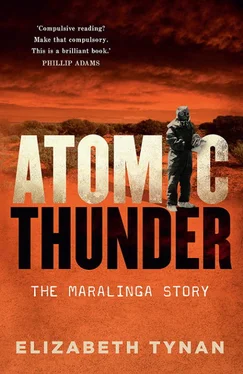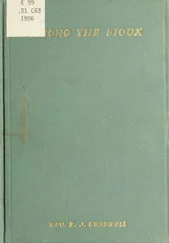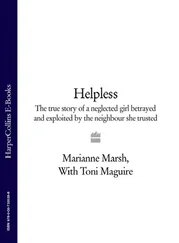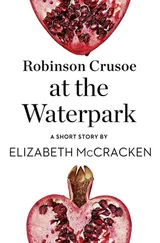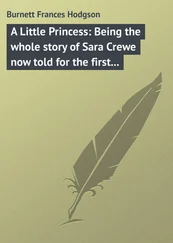The memorandum specifically noted the impact of Mosaic G2. A Gallup poll in March 1956 showed a majority of Australians ‘apparently against’ tests, although Western Australia and South Australia, the two states where they were held, came out in favour. So while the announcement of the permanent test site at Maralinga ‘was soberly and well presented by the major national newspapers’, newspapers felt compelled ‘to be critical of atomic tests because of the whipped up, if unthinking, public outcry against them. The near-hysteria built of flimsy misconceptions following the second Mosaic explosion is indicative of the difficulties now to be faced from a volatile Press, public opinion and political situation’. The writer concluded by arguing for a concerted campaign ‘to refute the major false issues’ concerning trials and for public education through newspaper and magazine articles ‘to restore the confidence and pride which only three years ago marked the ordinary Australian’s attitude towards co-operation with the U.K. in this vital defence matter’. But the Australian public never again evinced the patriotic fervour that had greeted Hurricane and Totem. If Mosaic had turned the tide, Maralinga increasingly made them uneasy. The public relations machine could not fix this entirely. After Operation Antler the media were shut out, and the dangerous Vixen B minor trials that followed Antler were not reported.
By 1957, then, public opinion had hardened towards the tests generally, and the world was moving towards new treaties that would limit atomic testing. Bipartisan political support for the tests had collapsed in the wake of the second Mosaic test, and the Opposition began to ask questions in parliament about their continuation. In June 1956, after Mosaic G2, the ALP caucus voted to oppose future atomic tests in Australia. The Australian media reported that political pressure was escalating as the ALP moved to an anti–nuclear weapons policy stance.
The next Federal Labour [ sic ] Government would vote no money for tests of nuclear weapons or the development of means of waging nuclear warfare, the Deputy Leader of the Federal Opposition, Mr Calwell, said today. Mr Calwell said that developments after the Monte Bello atomic explosion last week showed that if nuclear weapons tests were permitted to continue there, radio active dust, despite all precautions, might be carried across Australia.
Pressures were bearing down on the government from growing anti-nuclear sentiment in the community and increasing questions in parliament. Mosaic G2 had been a huge political issue for Menzies, and he did not want it repeated at the new test site. Also, Australia had by now grown rather tired of being kept in the dark about the details. The proposal for Antler was typically vague, with the main point being the plan to test five bombs (later amended to six, although in the event only three were tested) in tower-mounted trials. As Operation Grapple was gearing up to test a British H-bomb in the Pacific, the government wondered if the British planned to defy the terms of the Maralinga agreement and test a thermonuclear weapon. In some ways this seemed likely, since thermonuclear weapons were now the main game and Maralinga was the permanent British test site. The terms of the Maralinga agreement had not exactly proved an insurmountable obstacle to the British before.
Consequently, approval was slower than usual in coming. The Australians first received a request for the Antler series on 20 September 1956 but took until 16 May 1957 to grant approval. Despite this uncharacteristic delay, Antler took place as scheduled in September 1957. Initially the British named this series Operation Sapphire. However, in early 1957, without warning or explanation, they changed the codename to Operation Volcano. The horrified Australians rejected it outright. The name suggested violence and destruction. Antler was chosen after the Australians voiced their concerns.
Antler was connected to the H-bomb trials in the Pacific and designed to test certain components necessary for thermonuclear weaponry. Penney was not the director this time around. Instead, it was led by Charles Adams, who had been second in command at the Mosaic tests. The tests began at Tadje on 12 September 1957 with a small 1-kilotonne device (known as Pixie) detonated from a 30-metre tower. Round 2 (Indigo Hammer) was held on 21 September at Biak, again detonated from a tower. This device had a yield of 6 kilotonnes. The final weapons test in the Antler series was held on 9 October at Taranaki. The device, a trigger for a thermonuclear weapon, was suspended 300 metres aloft in the desert sky by balloons. With a yield of 25 kilotonnes, the same as Hurricane, this was the biggest device tested at Maralinga. The balloon tests could hoist atomic devices far higher than towers. This was of great interest to the AWRE, and development work had started at Aldermaston about 18 months before the test. Ernest Titterton observed the progress of the balloon systems when he visited the UK in March 1957.
The second Antler shot was observed by a grab bag of about 70 international visitors, including representatives from the Central African Federation, the Federation of Malaya (now Malaysia), the North Atlantic Treaty Organisation, the Baghdad Pact (Iraq and Iran) and two South-East Asia Treaty Organisation partners, Thailand and the Philippines. The third and final shot was observed by representatives of the international and Australian media and a range of Australian parliamentarians.
By the end of 1957, Howard Beale, the Australian face of the test program, had apparently fallen out with Menzies, and early the following year he shipped out to a post as ambassador to the US (the posting of choice for fallen Australian Cabinet ministers).
As it turned out, Antler was the last major series. The international situation had changed markedly. Britain was now a signatory to an international moratorium on atomic weapons struck in Geneva. Operation Lighthouse, scheduled for 1958 at Maralinga, never happened. No doubt this was a good thing, since Lighthouse involved more extensive human exposure experiments along the lines of the Indoctrinee Force – hundreds of men wrapped in special blankets were to huddle close to a major explosion.
There were no more major atmospheric tests at Maralinga. The seven nuclear devices tested there had sent radioactive clouds over a large portion of the Australian continent, joining the contamination already contributed by the non-Maralinga tests, particularly Mosaic G2. To this day no-one can say for sure whether this contamination caused harm to the broad Australian population. Almost certainly, though, the people closest to the bomb blasts, the military and scientific personnel at Maralinga and the Indigenous people in the vicinity, were physically affected to varying degrees.
This is not the end of the story. If the British nuclear tests had involved only the mushroom cloud tests, most of the radioactivity would be undetectable now. But there was still much to find out about the innumerable intricate details of nuclear weapons design. Despite the moratorium, the British were not to be denied the knowledge that minor trials could provide. Maralinga continued to help the British understand what the atomic age had unleashed. The minor trials that burgeoned at Maralinga after the major trials ended sometimes strayed into murky legal waters. And while much of what happened at Maralinga beyond the big, showy mushroom clouds was considerably more damaging to Australian territory, it was not uncovered for decades.
5
Vixen B and other ‘minor trials’
I’m sure in 1985 plutonium is in every corner drug store, but in 1955, it’s a little hard to come by!
‘Dr Emmett Brown’,
Back to the Future , 1985.
In view of the known long half-life of plutonium (24 000 years), the Vixen series of minor trials should never have been conducted at Maralinga.
Читать дальше
